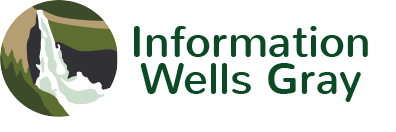
Wells Gray Park Cave Discovery
Discovery and Exploration
In the spring of 2018, a Canadian government team was surveying caribou populations by helicopter when the pilot, Ken Lancour, spotted the deep, snow-filled cavity. The team nicknamed the cave Sarlacc’s Pit in reference to the iconic Sarlacc creature from the film Return of the Jedi. The name, however, remains unofficial until a naming consultation can be held with First Nations in the area.
In September 2018, a team led by geologist Catherine Hickson and archaeological surveyor John Pollack returned to the site and made a partial descent into the cave once it was snow-free, estimating it to be at least two kilometers (1.2 mi) long. The ground reconnaissance expedition determined the physical dimensions of the cave. The team plans to return for more extensive explorations in 2020.
The discoverers wish to keep the location secret to prevent environmental damage to the cave from visitors. In addition, the Government of British Columbia closed the area around the cave in the interests of preservation and public safety.
Geography and Geology
Media reports say Sarlacc’s Pit is the largest known stripe karst cave. Preliminary estimates suggest that Sarlacc’s Pit may also have the largest cave entrance in Canada. Its entrance is 100 metres (330 ft) long by 60 metres (200 ft) wide and is at least 135 metres (443 ft) deep. A river flows into the entrance, becoming a waterfall and sending up mist that has prevented measuring the exact depth of the cave.
The cave is normally snow-covered for much of the year and sits at the bottom of a massive avalanche slope. Early fall may be the only practical season to explore the cave because this is when the waterfall that fills the entrance experiences its lowest flow; in spring, meltwater flows between 5 to 15 cubic metres per second (177 to 530 cu ft/s) prevents entrance. The cave may have been snow-covered year-round until the 20th century, which would suggest that it has not been explored by First Nations people, and the technical gear required, combined with the depth of the entrance shaft, means passing mountaineers in the last few decades are also unlikely to have explored it.

